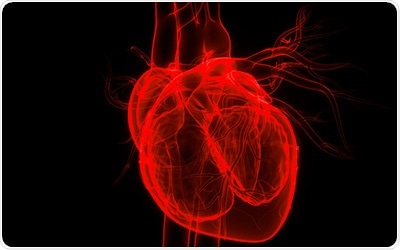Recent research guided by researchers at the University of Utah Health identified that a protein involved in regulating calcium signaling within heart cells can play a vital role in the prevention of chronic heart failure.

Image Credit: Getty Images.
The scientists report that disruption in the signaling pathway for this protein, VDAC2, results in severe impairment of heart cell contraction, making it difficult for the heart to deliver blood to the body. The results indicate that drugs and other treatments focusing on VDAC2 can eventually help mitigate heart failure.
Based on our human and laboratory research, it appears that If VDAC2 is not working properly, then everything in the heart can cascade downward from there. If we can figure out ways to help this protein do its job again, then it’s possible that we might be able to address heart failure far earlier in the disease process.”
Stavros Drakos MD and PhD, Study Senior Author and Director, Cardiovascular Research, Division of Cardiology, University of Utah Health
Stavros Drakos is also a Professor of Medicine. The research was published in Nature Communications journal.
Researchers were aware of the fact that calcium—the mineral that maintains the bones and teeth strong—performs a significant role in the heart. In between heartbeats, calcium levels in heart muscle cells (called myocytes) decrease, allowing the cell to relax. During contraction, a huge amount of calcium rushes out of a small cellular structure called the sarcoplasmic reticulum, making the cell contract.
This constant ebb and flow of calcium towards and out of the inner fluid of heart muscle cells are vital in keeping the heart beating.
The organelle mitochondria also depend on calcium to produce biochemical energy that keeps cells viable. Mitochondria communicate with the sarcoplasmic reticulum; however, its distinct role in calcium signaling and cardiovascular health is not yet understood.
The research undertaken by Drakos and associates sought to attain a greater understanding of the role of mitochondria in the calcium cycle within heart cells.
By analyzing previous research works involving human heart tissue from heart failure patients, the researchers identified a positive correlation between improved heart function and VDAC2 activity—a protein found on the outer membrane of the mitochondria that enables calcium to flow into the mitochondria. Accordingly, they deduced that VDAC2 can play a significant role in this disease.
The scientists knocked out or disabled VDAC2 in the laboratory mice. As a result, calcium flow in the mitochondria was seriously affected and heart cells could not beat properly. The mice also developed enlargement of the heart’s left ventricle or pumping chamber—a condition called dilated cardiomyopathy—making it difficult for the heart to pump blood and eventually to heart failure and death.
The scientists identified that VDAC2 interacts with a pair of proteins in the sarcoplasmic reticulum. Hampering this protein-to-protein communication led to impaired cellular calcium signaling and heart failure. While VDAC2 is restored in knock-out mice, many of the effects of heart failure were reversed, including reduced swelling of the left ventricle, and death was prevented.
In other research involving mice that are genetically prone to develop heart failure, the scientists identified that an experimental drug called efsevin, which binds to VDAC2, improves mitochondrial calcium uptake, thereby enhancing cardiovascular health.
The researchers recommend efsevin and other drugs that target VDAC2 as good drug candidates for further testing as treatments for heart failure.
Our study shows the importance of VDAC2 in normal cardiac function. Through this unique role, VDAC2 emerges as a potential therapeutic target for heart failure patients.”
Thirupura Sundari Shankar, Study Lead Author, PhD Student, University of Utah Health
Shankar is a PhD student in Drako’s lab.
Source:
Journal reference:
Shankar, T. S., et al. (2021) Cardiac-specific deletion of voltage dependent anion channel 2 leads to dilated cardiomyopathy by altering calcium homeostasis. Nature Communications. doi.org/10.1038/s41467-021-24869-0.